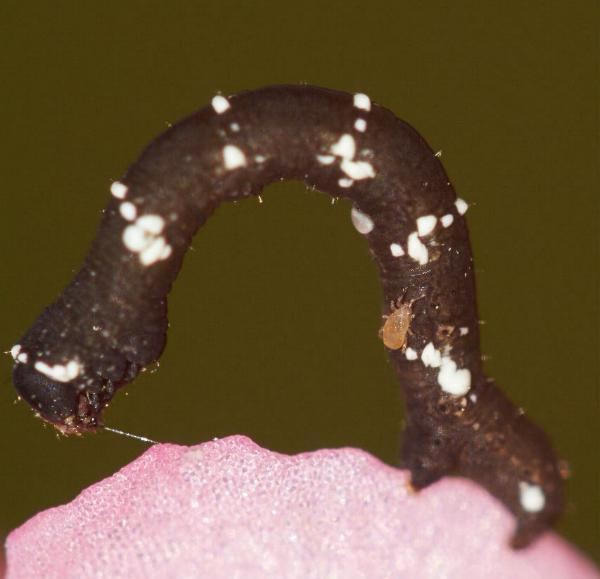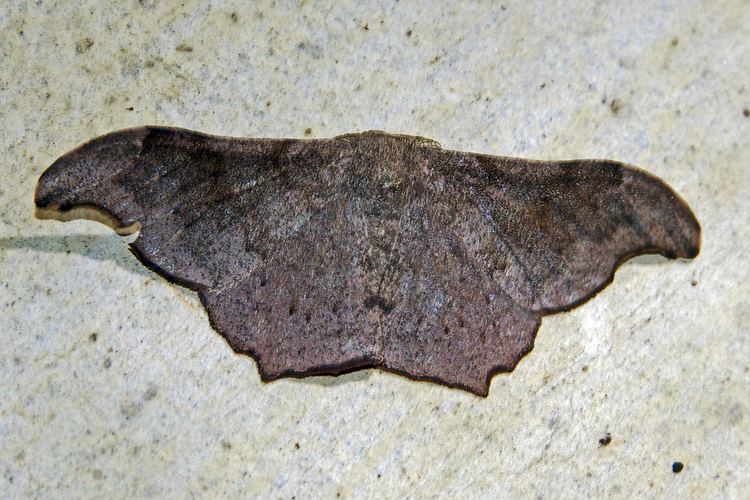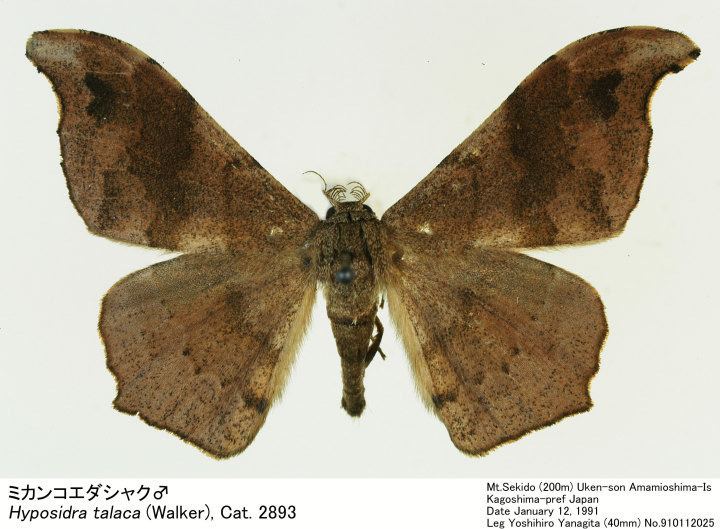Kingdom Animalia Family Geometridae Tribe Boarmiini Order Butterflies and moths | Class Insecta Subfamily Ennominae Phylum Arthropoda Rank Species | |
 | ||
Similar Hyposidra, Butterflies and moths, Biston suppressaria, Krananda, Fascellina chromataria | ||
The Black looper, (Hyposidra talaca), also known as Black inch worm, is a moth of the family Geometridae. It is found in India to Indochina, Sundaland, Sulawesi, the Philippines, Sri Lanka, the Solomon Islands, Thailand, Taiwan, New Guinea and Australia, where it has been recorded from Queensland. It is a major defoliating pest in tea plantations.
Contents

Description

The wingspan is about 30 mm. Female with outer margin of hind wings hardly crenulate. Male with outer margin of neither wing excised. Antennae pectinated. Hind wings with outer margin angled at vein 4. Body dark olive fuscous, more or less irrorated and suffused with grey. Both wings faint traces of medial and crenulate postmedial lines. The cilia dark. Fore wings with traces of antemedial line and more or less distinct sub-apical patch in male. Underside with crenulate postmedial line to both wings.

Larva is a looper, with body pinkish olive-green, irrorated with black, and with dark patches on 4th and 6th somites. Later instars are uniform brown.

The larvae feed on the foliage of a wide range of plants, including Anacardium, Bombax, Terminalia, Chromolaena, Gynura, Mikania, Cupressus, Aleurites, Aporusa, Bischofia, Breynia, Glochidion, Hevea, Manihot, Ficus, Morus, Psidium, Polygonum, Rubus, Cinchona, Coffea, Mussaenda, Citrus, Euodia, Schleichera, Theobroma, Perilla frutescens, Camellia and Tectona species.
Eggs and caterpillar are largely susceptible for many parasitized hymenopterans, and birds.
Subspecies



